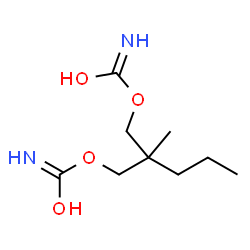Chapter 18: Problem 32
Show the product of treating \(\gamma\)-butyrolactone with each reagent.
Short Answer
Expert verified
Answer: (a) 4-hydroxybutanoic acid, (b) 1,4-butanediol.
Step by step solution
01
Identify the Reagent and the Reaction Mechanism
Sodium hydroxide is a strong base, with the hydroxide ion (OH-) acting as the nucleophile in this reaction. The reaction between an ester and a base is a nucleophilic acyl substitution, specifically, hydrolysis. The nucleophile will attack the carbonyl carbon of the ester, breaking the C-O bond and forming a new bond with an alcohol and carboxylate as products.
##Step 2: Draw the reaction mechanism with NaOH##
02
Reaction Mechanism and Product Formation
The hydrolysis reaction mechanism involves three major steps: nucleophilic attack, acyl-oxygen cleavage and proton transfer. The hydroxide ion attacks the carbonyl carbon, forming a tetrahedral intermediate. Carbonyl oxygen obtains negative charge, with its bond pair of electrons. In the next step, The negatively charged carbonyl oxygen donates its electrons to reform the carbonyl group, and the ethoxide ion departs, leaving an open chain carboxylate. Finally, a proton is received by the ethoxide ion, which forms the alcohol.
The product of this reaction will be 4-hydroxybutanoic acid and water. The product can be written as:

##Step 3: Lithium Aluminum Hydride (LiAlH4) reaction with γ-butyrolactone##
03
Identify the Reagent and the Reaction Mechanism
Lithium aluminum hydride, LiAlH4, is a strong reducing agent, which is commonly used to reduce esters to their corresponding primary alcohols. The reaction between an ester and LiAlH4 is also a nucleophilic acyl substitution. In this reaction, hydride ion (H-) will act as the nucleophile, attacking the carbonyl carbon.
##Step 4: Draw the reaction mechanism with LiAlH4##
04
Reaction Mechanism and Product Formation
The reduction reaction mechanism involves three major steps: nucleophilic attack, acyl-oxygen cleavage, and proton transfer. The hydride ion (H-) attacks the carbonyl carbon, forming a tetrahedral intermediate. Carbonyl oxygen obtains negative charge, with its bond pair of electrons. In the next step, the negatively charged carbonyl oxygen donates its electrons to reform the carbonyl group, and the alkoxy ion departs, leaving behind an aldehyde. The resulting aldehyde is again attacked by the hydride ion, which eventually forms an alcohol.
The product of this reaction will be the primary alcohol, 1,4-butanediol. The product can be written as:

To summarize, the products of treating γ-butyrolactone with given reagents are:
1. Sodium hydroxide (NaOH) -> 4-hydroxybutanoic acid
2. Lithium aluminum hydride (LiAlH4) -> 1,4-butanediol

Unlock Step-by-Step Solutions & Ace Your Exams!
-
Full Textbook Solutions
Get detailed explanations and key concepts
-
Unlimited Al creation
Al flashcards, explanations, exams and more...
-
Ads-free access
To over 500 millions flashcards
-
Money-back guarantee
We refund you if you fail your exam.
Over 30 million students worldwide already upgrade their learning with Vaia!
